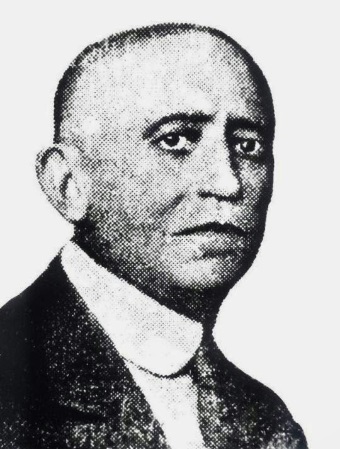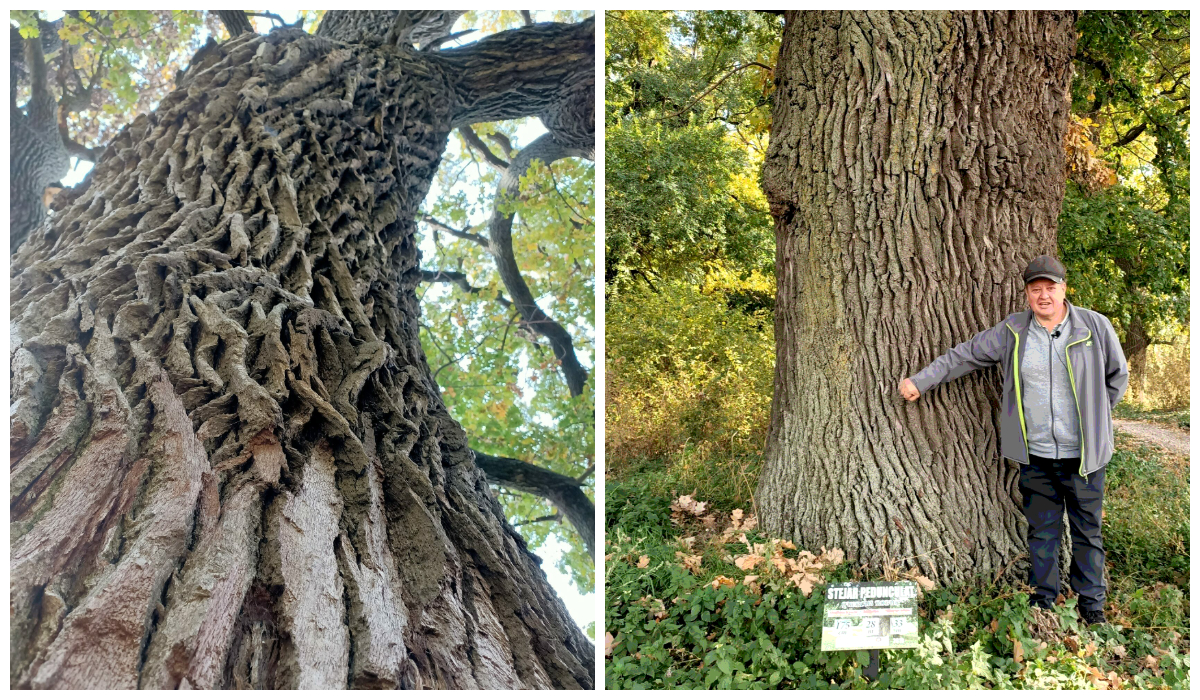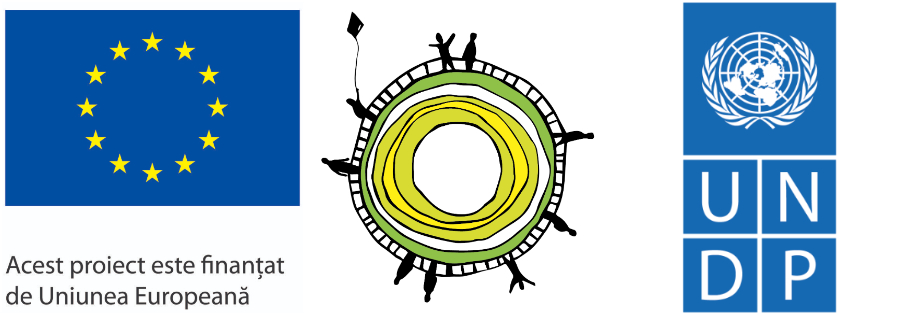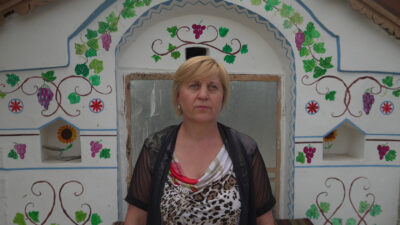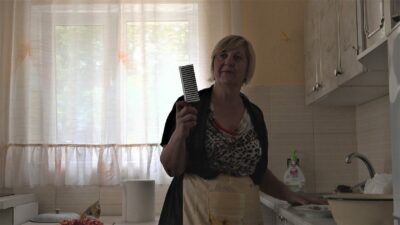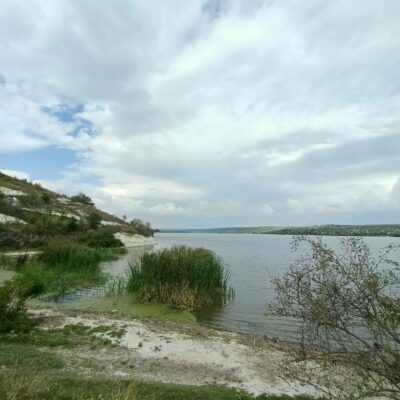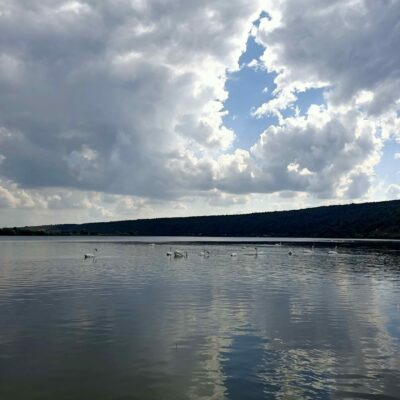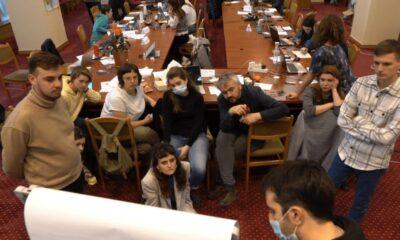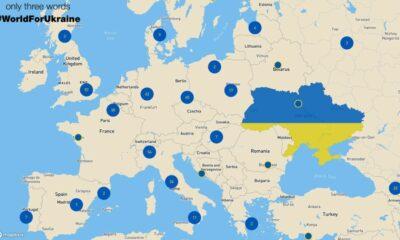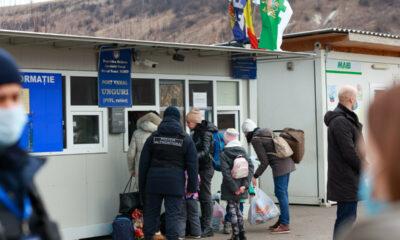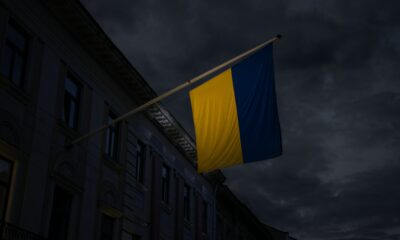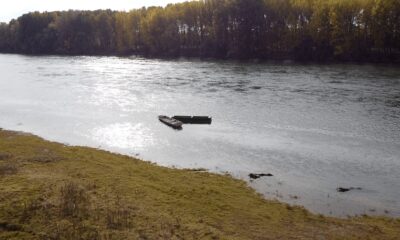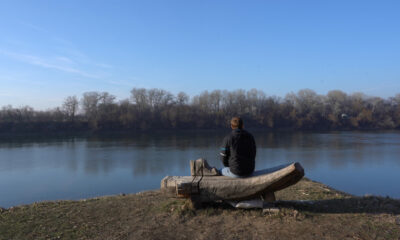Tourism
“Along lesser traveled roads”- trip to Moldova, Fortress Soroca, part two
Darius Roby is a travel writer, translator, and an editor for Cluj.com, a city portal with information pertaining to life and tourism in Cluj-Napoca. He can be reached at [email protected]
He shared with us his journal of the trip to Moldova. This is the part where Darius tells about his stay in Soroca.
I have a thing for castles and fortresses. They are some of the coolest things a nerd such as myself can explore on the European continent. They are symbols from a period when power was projected through great architectural marvels such as castles and cathedrals. Today, this still holds true, but the symbols have become the great skyscrapers where banks operate. Being an avid lover of medieval history, my travels have taken me around some interesting fortresses in the territory of the former principality of Moldova: Suceava, Neamț, and Khotyn. Recently, I found myself visiting another one of Ștefan cel Mare’s defensive wonders – Cetatea Soroca.
Soroca lies in northern Moldova, on the right bank of the Dniester River. It is about 160 kilometers north of the capital, Chisinau, and can be reached in a little over a couple of hours from the capital. It is home to approximately 40,000 people – Moldovans forming the majority as well as sizeable Ukrainian, Russian, and Gypsy populations. The people are for the most part bilingual – speaking Romanian and Russian. One is just as likely to hear Russian spoken as one would hear Romanian. Being a foreigner, I was more often than not greeted and spoken to in Russian, similar to how people in Romania tend to speak English to foreigners. As is the case throughout the rest of the country, the people are Orthodox Christians.
The city is picturesque in its own right. The steppes and rolling valleys that make up Moldova surprisingly become rocky hills and cliffs as one begins to approach the Dniester. It is upon one of these hills where one can find the Lumânarea Recunoştinţei, the Thanksgiving Candle, a very beautiful and tall chapel that was built in the shape of a candle. At night it creates an impressive sight and I have been told that on a clear night, its light can be seen from as far away as Otaci, 50 kilometers to the north. From the chapel, one can enjoy a lovely panorama of Soroca, the Dniester, as well as Tsekynivka, a village on the left bank of the river in Ukraine. Also, there is a small cave to be found on an inaccessible face of the cliff.
Should one follow the river in the direction of the city, one will encounter a great monument. Written in both Russian and Romanian (with Cyrillic characters) it is dedicated to the Moldo-Russian alliance that was created in 1711 between Peter the Great and Dimitrie Cantemir. It marks the location where Russian soldiers crossed the Dniester and entered Moldova in order to make war on the Ottoman Porte. To me the monument has an ominous feel, celebrating a military relationship that would one day become both political and cultural, one that continues to manifest itself onto this present day.
Walking further along the banks of the river, one encounters Cetatea Soroca, proudly standing guard over the river crossing. There is disagreement over whether the stone fortress was built by Ștefan cel Mare or by his son Petru Rareș. In any regard, the fortress is far older, previously being a wooden Genoese trading post, and probably even a stronghold of the Bolokhoveni before the Mongol invasion of Kievan Rus. There are five defensive towers forming a perfect circle from which archers would have operated. The three meters thick walls are curved and the stonework is in excellent condition, with over 75% of the original structure still standing. This is something that I find surprising because by the time the fortress was completed during the 16th century, its late medieval innovations were already obsolete in the face of gunpowder. Normally in such a situation, the rulers would have converted such a fortress into a Renaissance style palace. My only hypothesis is that the stone fortress (as well as those at Khotyn and Tighina) proved itself as an effective detriment to the cavalry based hordes of the Crimean Khanate. Over the past two years the fortress has undergone renovation, so that locals and tourists will be able to enjoy it for years to come.
The fortress is cared for by Nicolae Bulat, a man who needs no introduction. He is a writer, historian, and the director of the local museum. He is one of those rare people who does his work out of love and is always happy to meet people at the fortress in order to discuss the great events that have taken place there throughout the ages. He speaks great English and no matter if one is a small school child or a wandering American traveler, he has a talent for immersing one into the history of Moldova. His knowledge of American literature impressed me and these days I find myself reading a book of his, Jupânița cea Frumoasă, which translates to something like “The beautiful young boyaress.” One of my favorite things about traveling is to discover the local literature which often proves itself to be among the most beautiful souvenirs and a great educational experience.
As previously mentioned, Soroca is quite hilly, and upon one of these hills lives a community of Gypsies. This community is quite famous in Moldova and they are surprisingly wealthy compared to the rest of the city. They live in big, elaborate houses, which can be better described as palaces. It is possible to find Gypsies who live in (or are busy constructing) similar houses in Romania and they are architectural wonders in their own right.
I am not very aware of hotel availability in Soroca. I have visited the city twice and each time I stayed in a different hotel. I once stayed at the Vila de Nord, which is conveniently located next to the bus station and the bazaar, and for this trip I stayed in the Hotel Centrala which is conveniently located in the center of the city. Both are fine choices depending on the preferred location, reasonably priced, and are within walking distance of the city’s touristic sites. There are reasonably priced food options all over the city, whether one desires the elaborate dishes from traditional Moldovan cuisine or to lazily sit next to the river while enjoying a freshly baked pie.
Overall, Soroca makes for a fine weekend excursion. It is home to what is arguably the most famous medieval monument in the country, is great for walking, and offers great panoramas for photography lovers. It is simply one of the numerous places along lesser traveled roads that welcomes the weary traveler and reminds him how even some of the smallest places are packed with historical and cultural significance. Even those who are simply passing through can find Soroca an interesting stop due to it’s small town charm and relaxing atmosphere – especially on a warm summer day.
Culture
The village of the first astronomer in the Republic of Moldova

Culture
Vîșcăuți, the Moldovan village where you feel like heaven
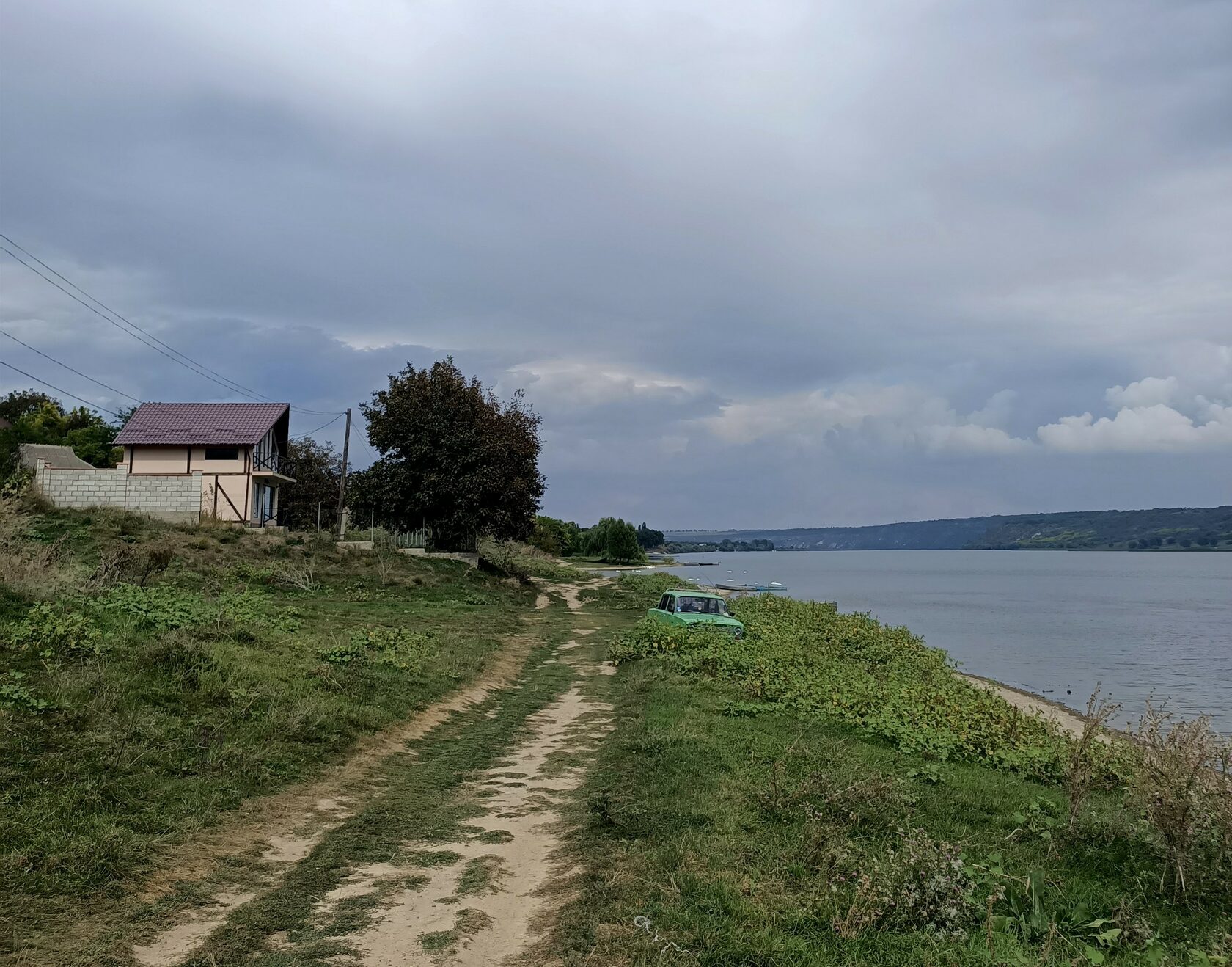
Reading Time: 9 minutesShe enters the house in a hurry and arranges the corner of the entrance mat. She leaves her purse and other items on the kitchen chair and starts washing the dishes. Then she goes to the second floor, changes the sheets on the beds, arranges the trinkets on the table, draws the curtains and opens the windows to aerate the room. From the window you can see the Nistru river, its banks covered with fresh vegetation. The woman sees to her tasks. She vacuums, she cleans the floors and starts all over again on the first floor.
Then she moves to the old house next door. Nobody was accommodated in this house yet, as everyone prefers “euro” repairs, as Lucia, the 52 years old administrator of the guest house, explains. But she doesn’t let the dust settle on the furniture and always has the rooms ready to accommodate guests.
The House of the Boyar is a guest house in the village of Vîșcăuți, Orhei, and can accommodate up to 8 persons. It is part of an eco-cultural touristic project “Bronze Half-moon” (“Semiluna de bronz”), which aims at attracting tourists in rural regions, offering them authentic experience, but it also promotes social entrepreneurship.
Besides involving the locals by creating jobs, the project also offers the opportunity and necessary support for the villagers to sell their products and services. Also, the profit is reinvested in the locality and its development. For example, now they work on developing a touristic trail through the forests of Vîșcăuți with all the necessary infrastructure, which will benefit the visitors of the village, as well as the locals.

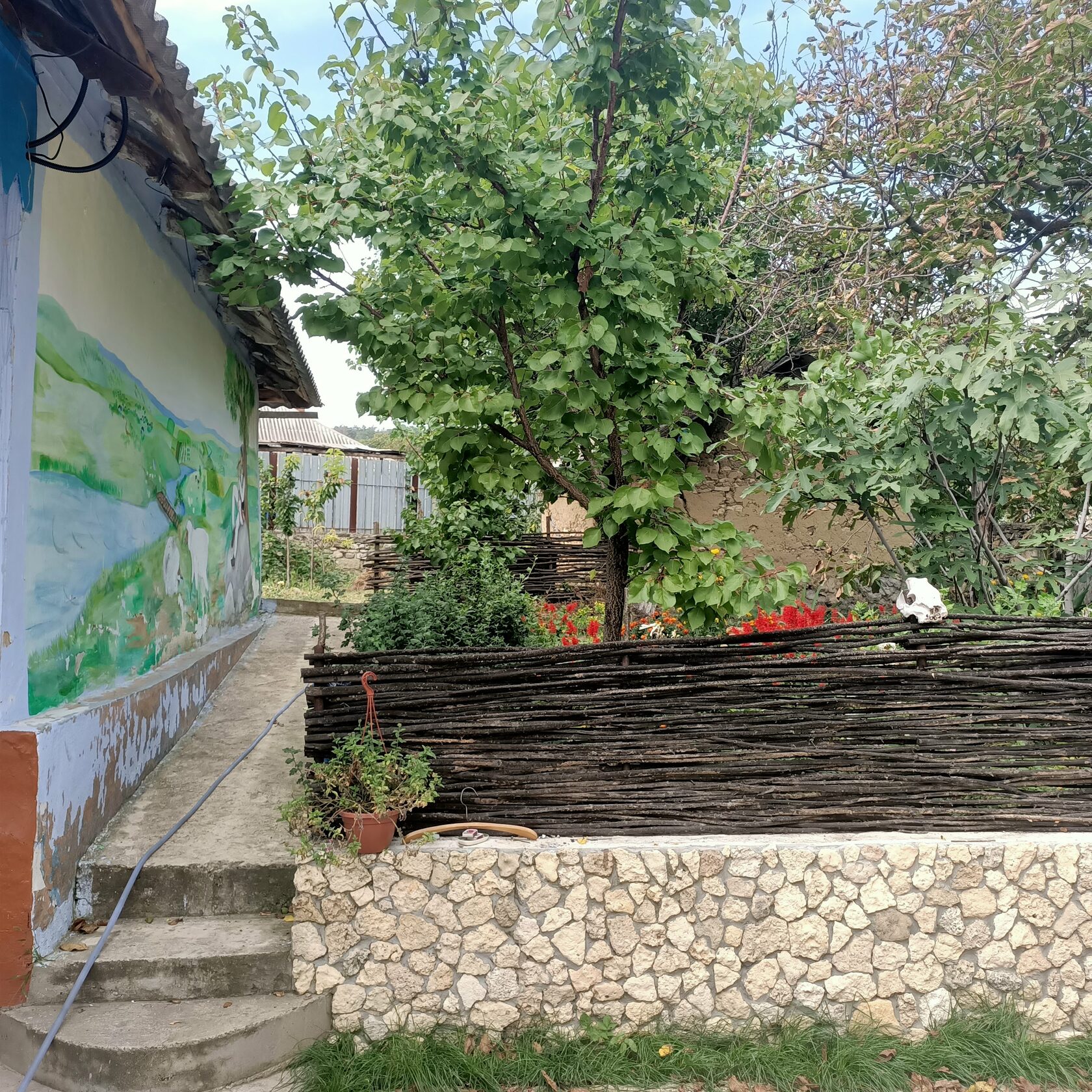
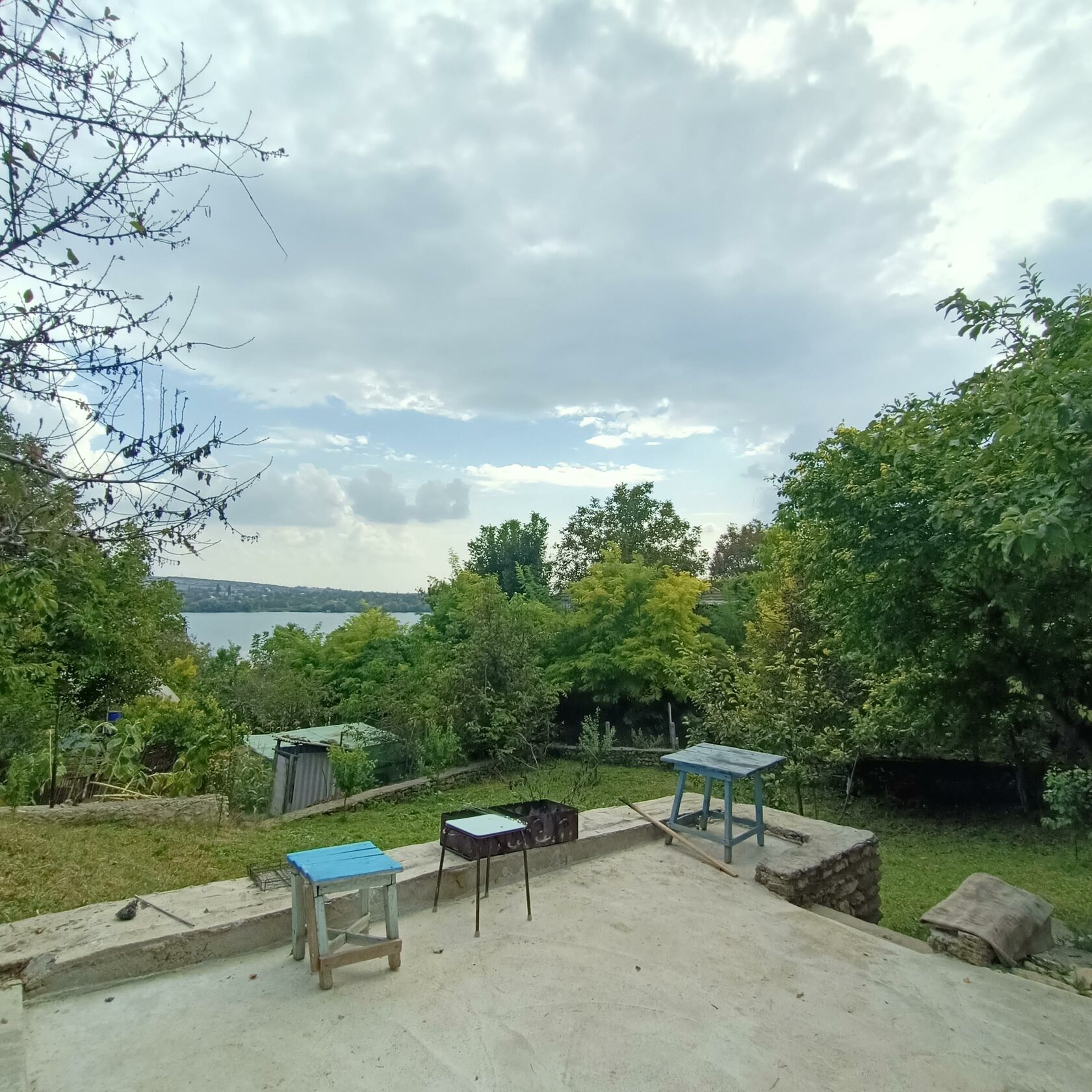
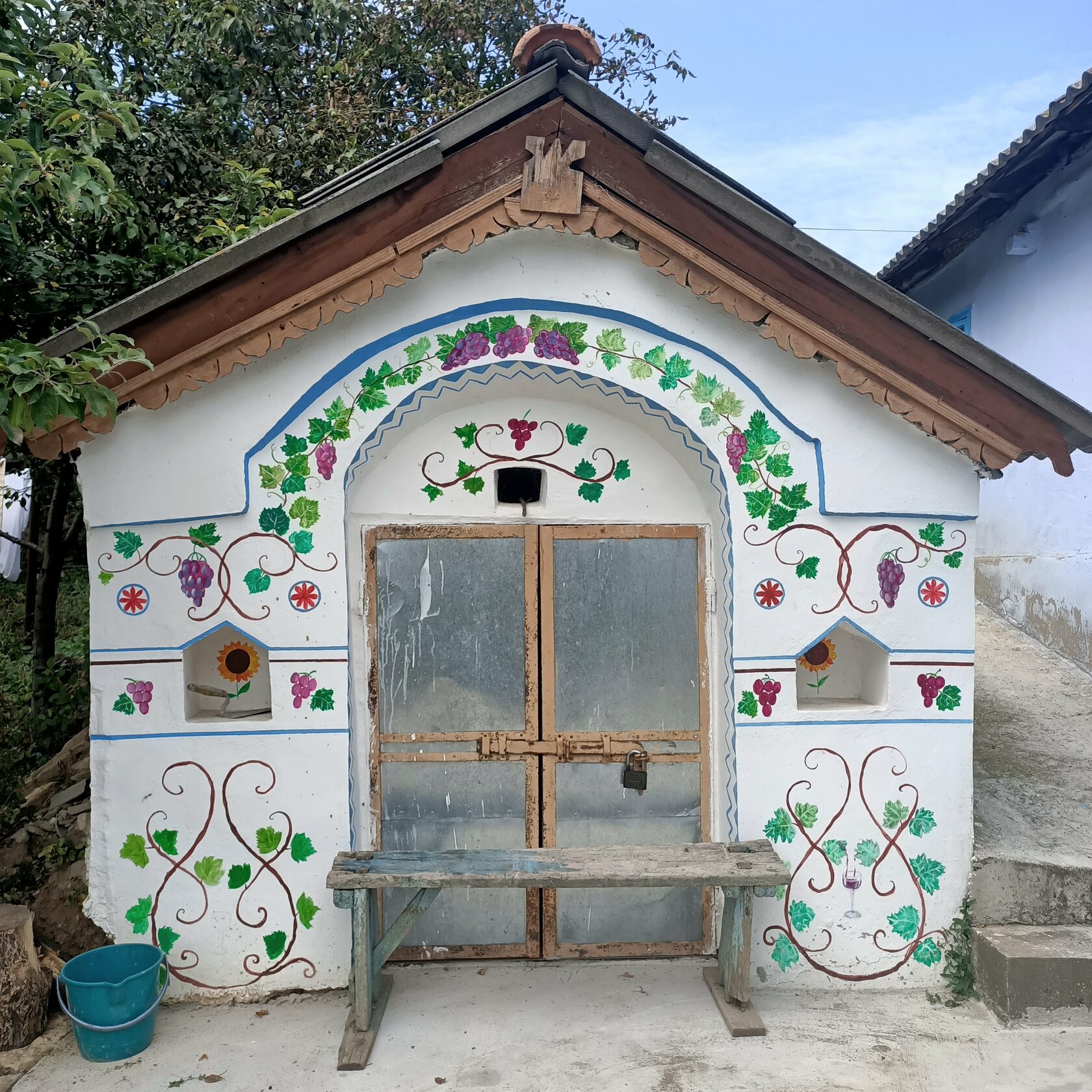
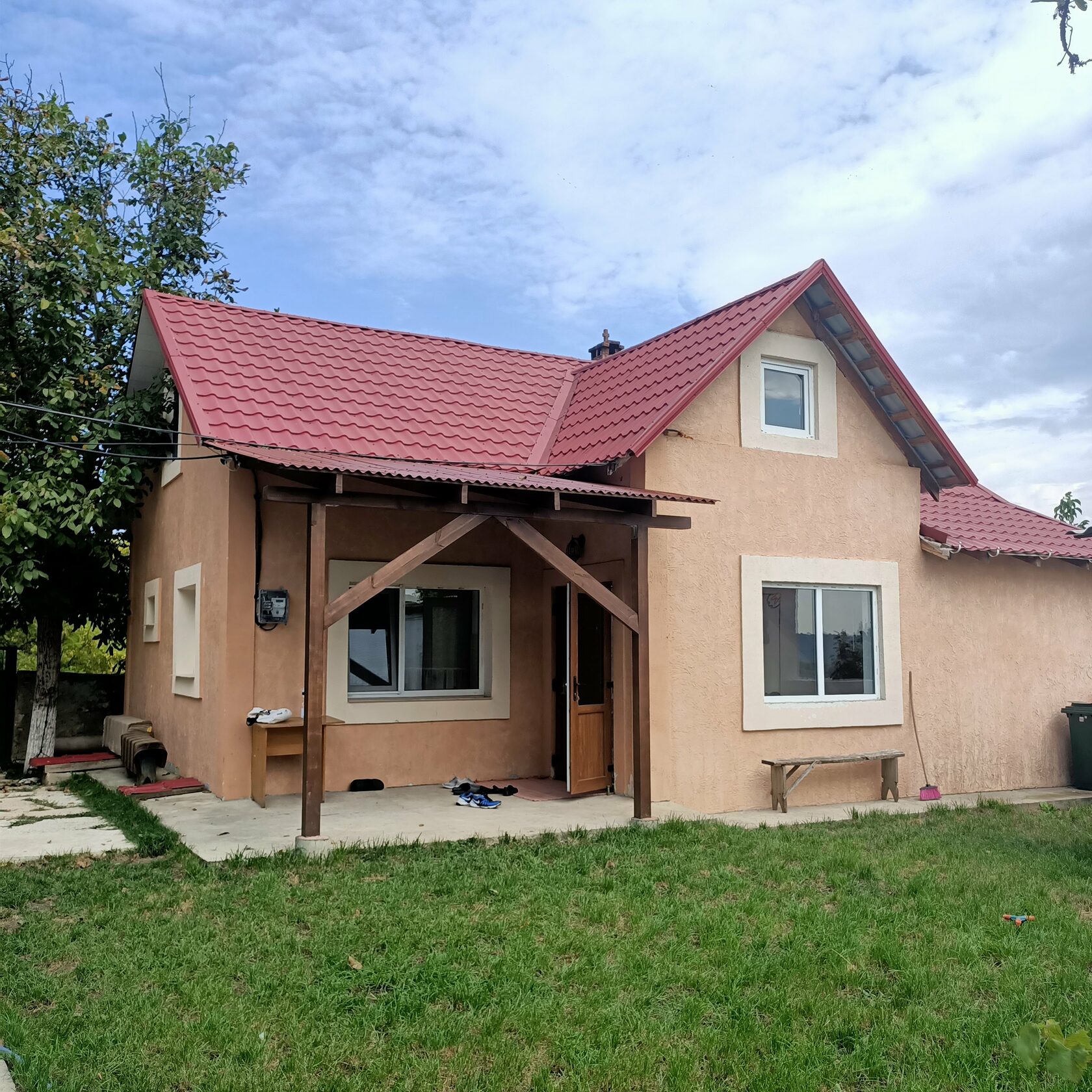

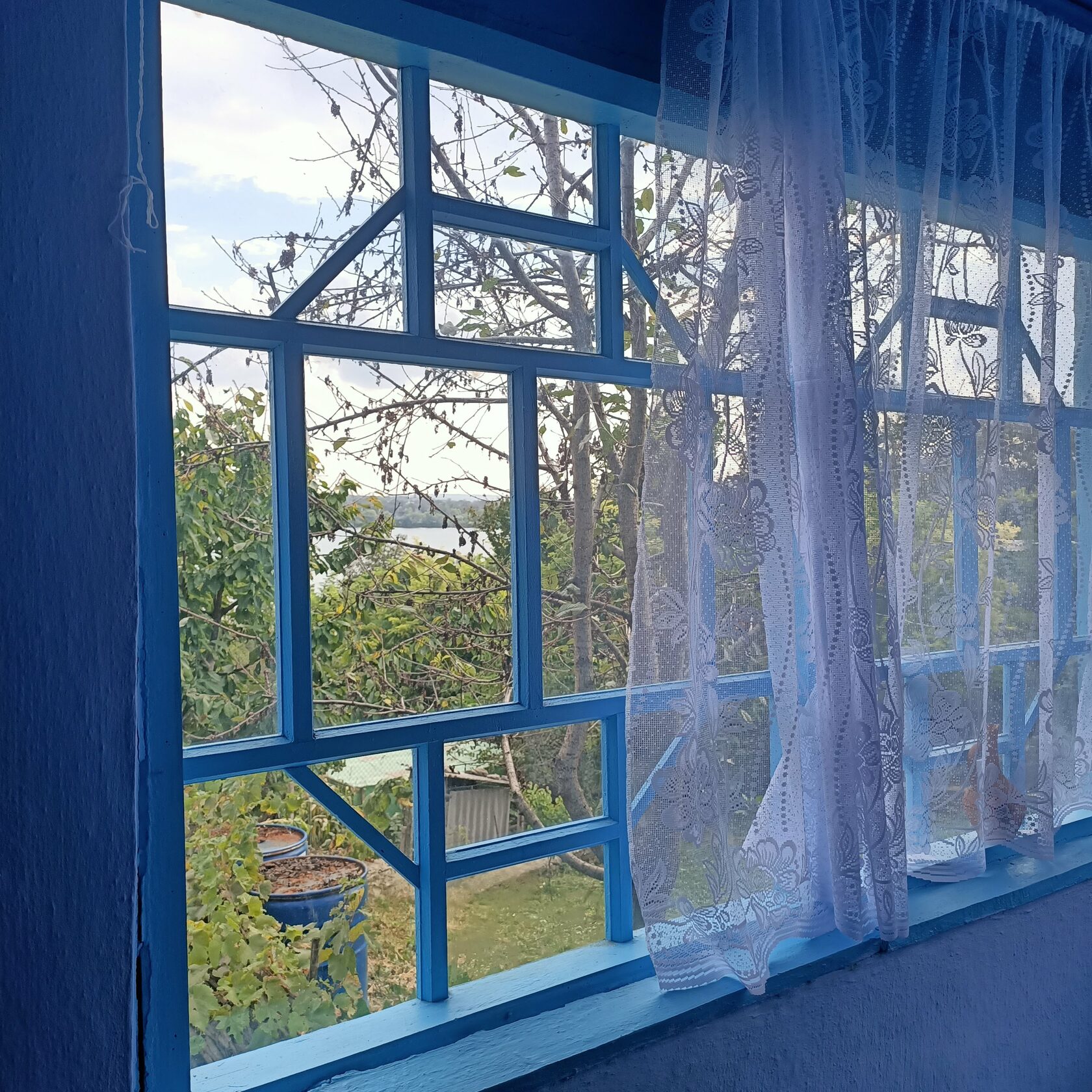
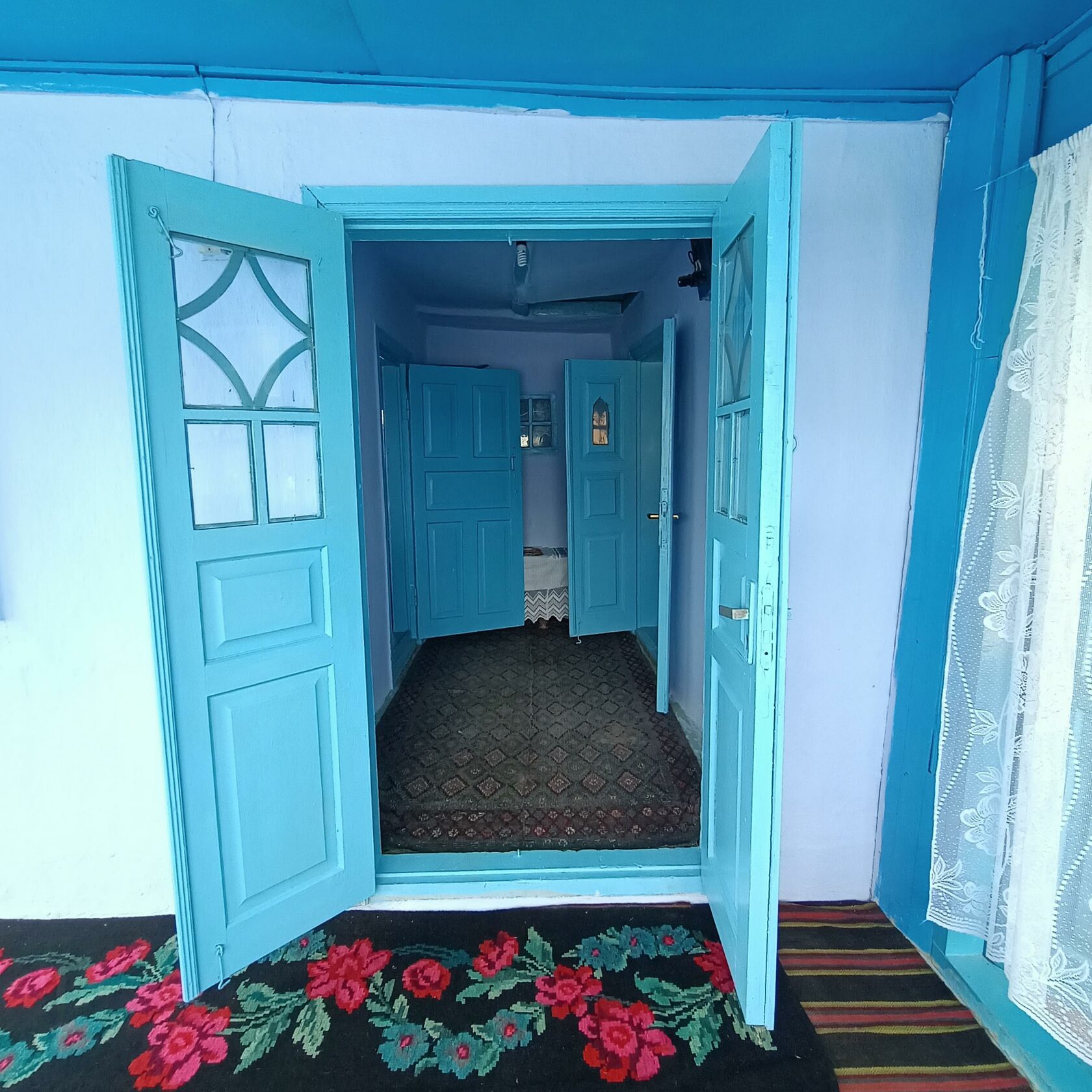
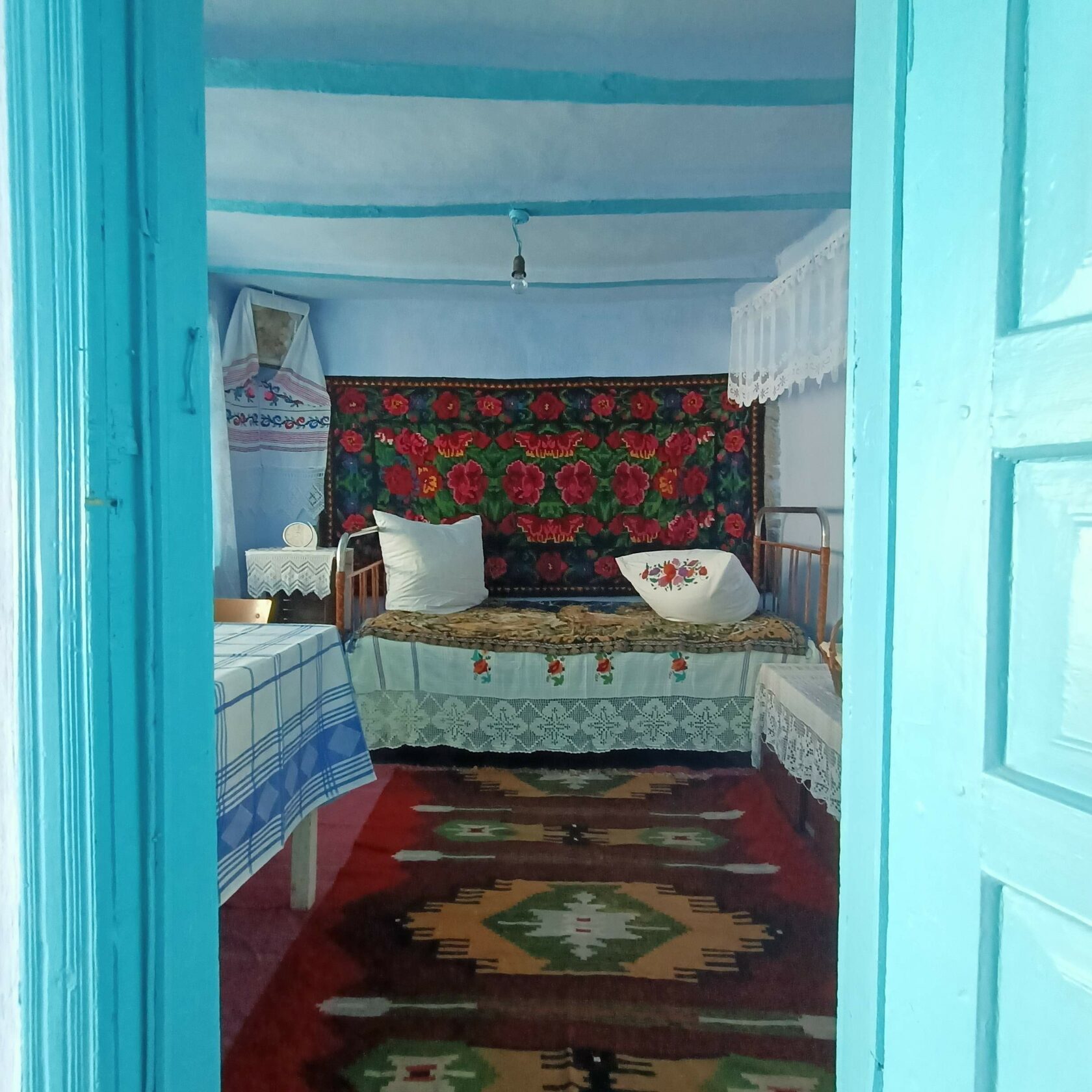
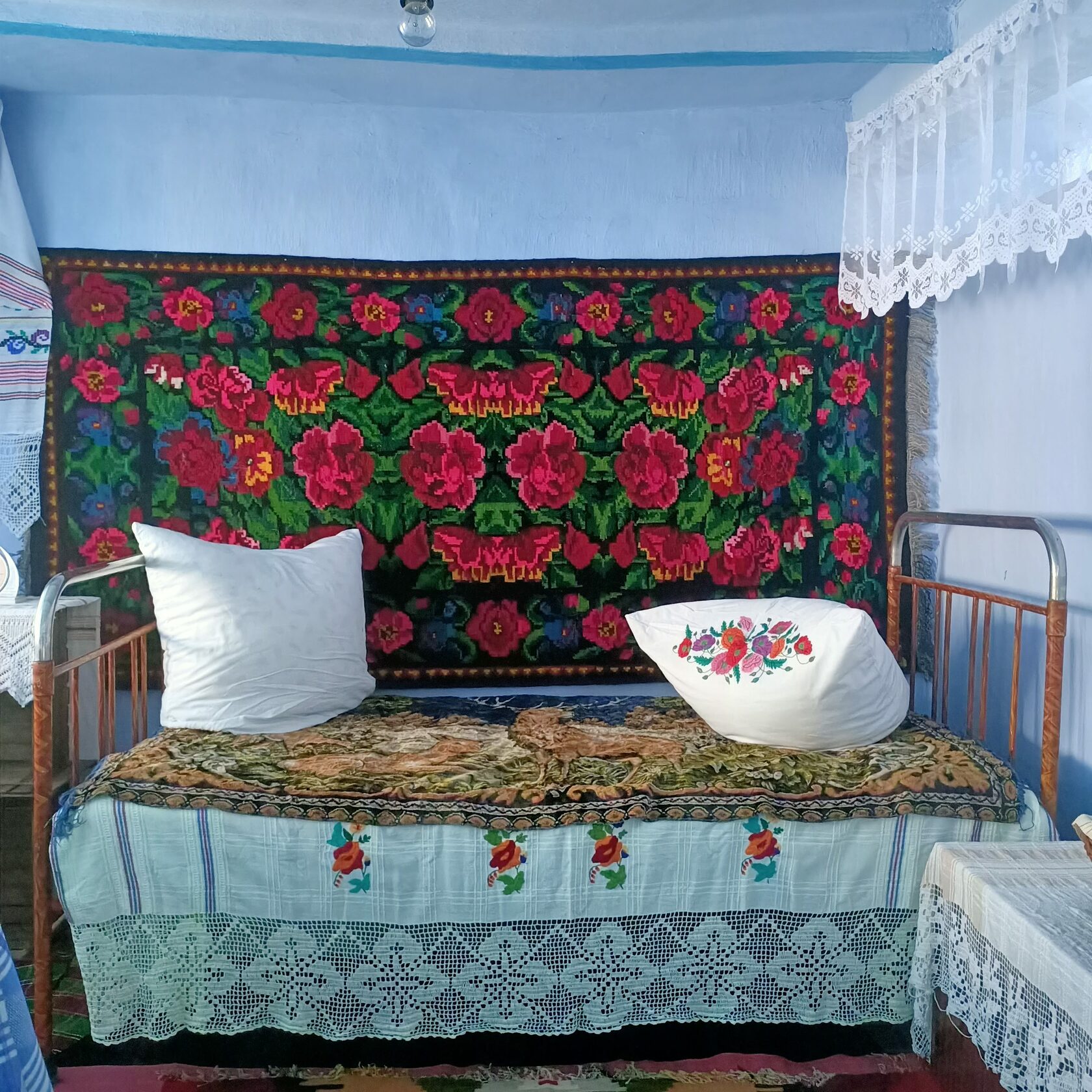
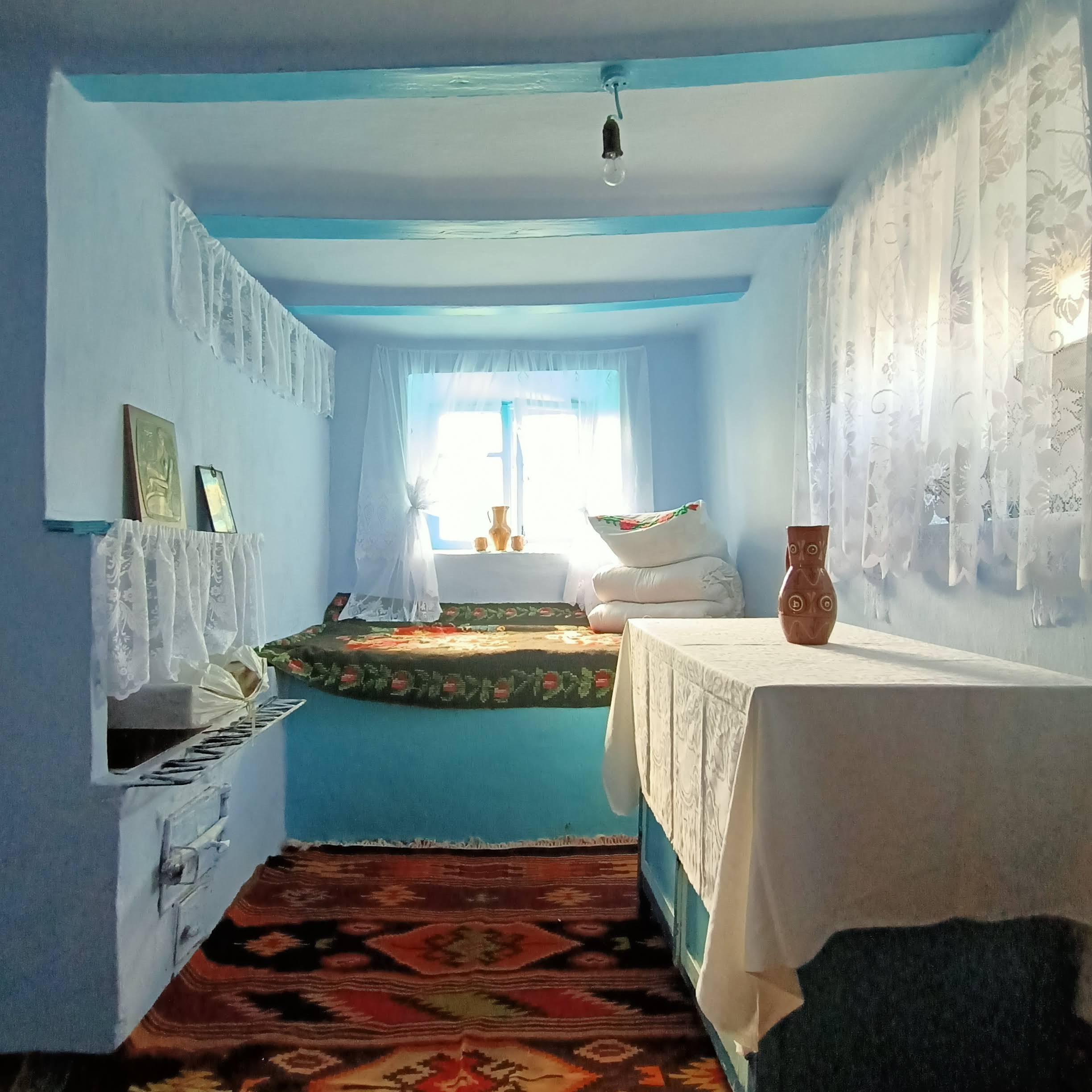
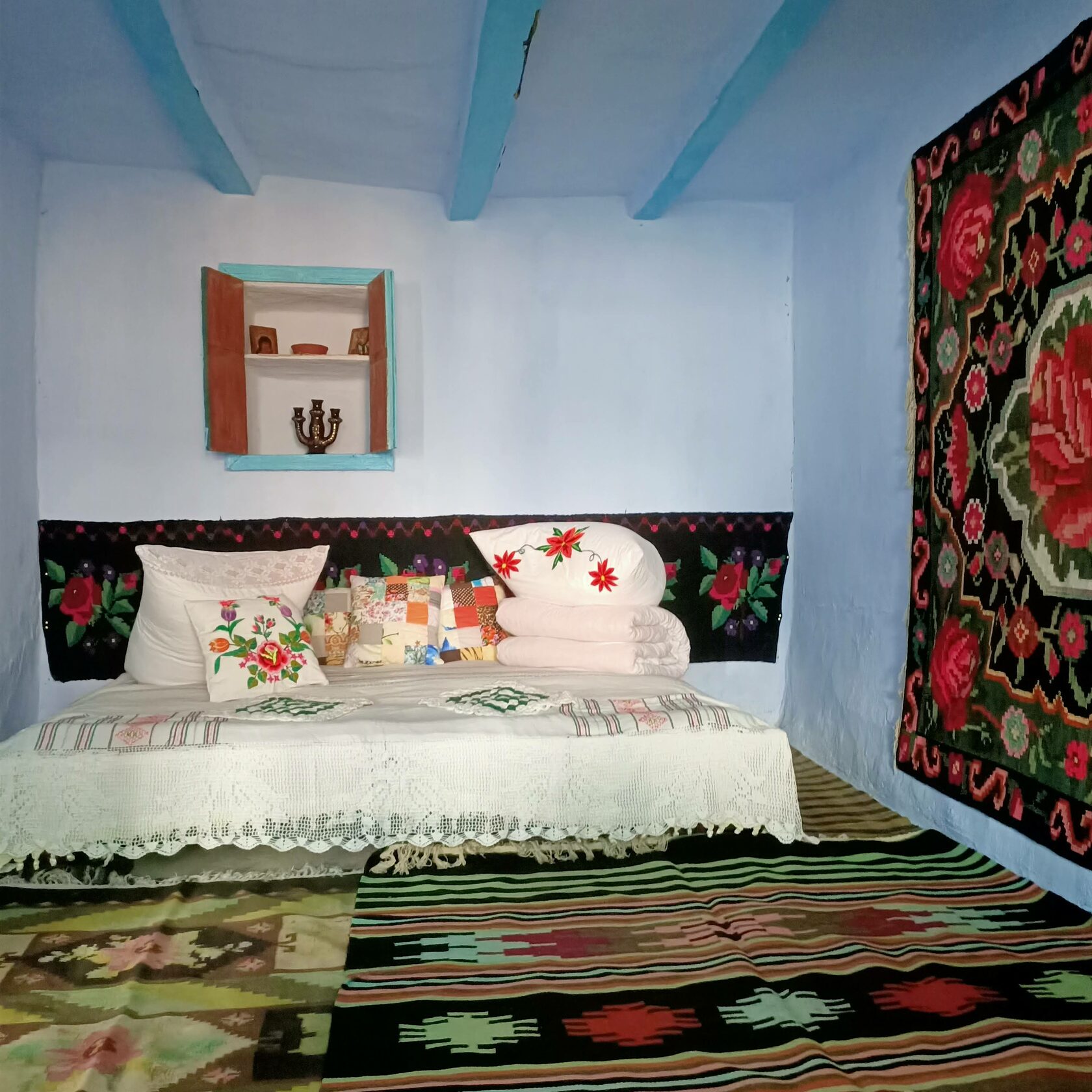
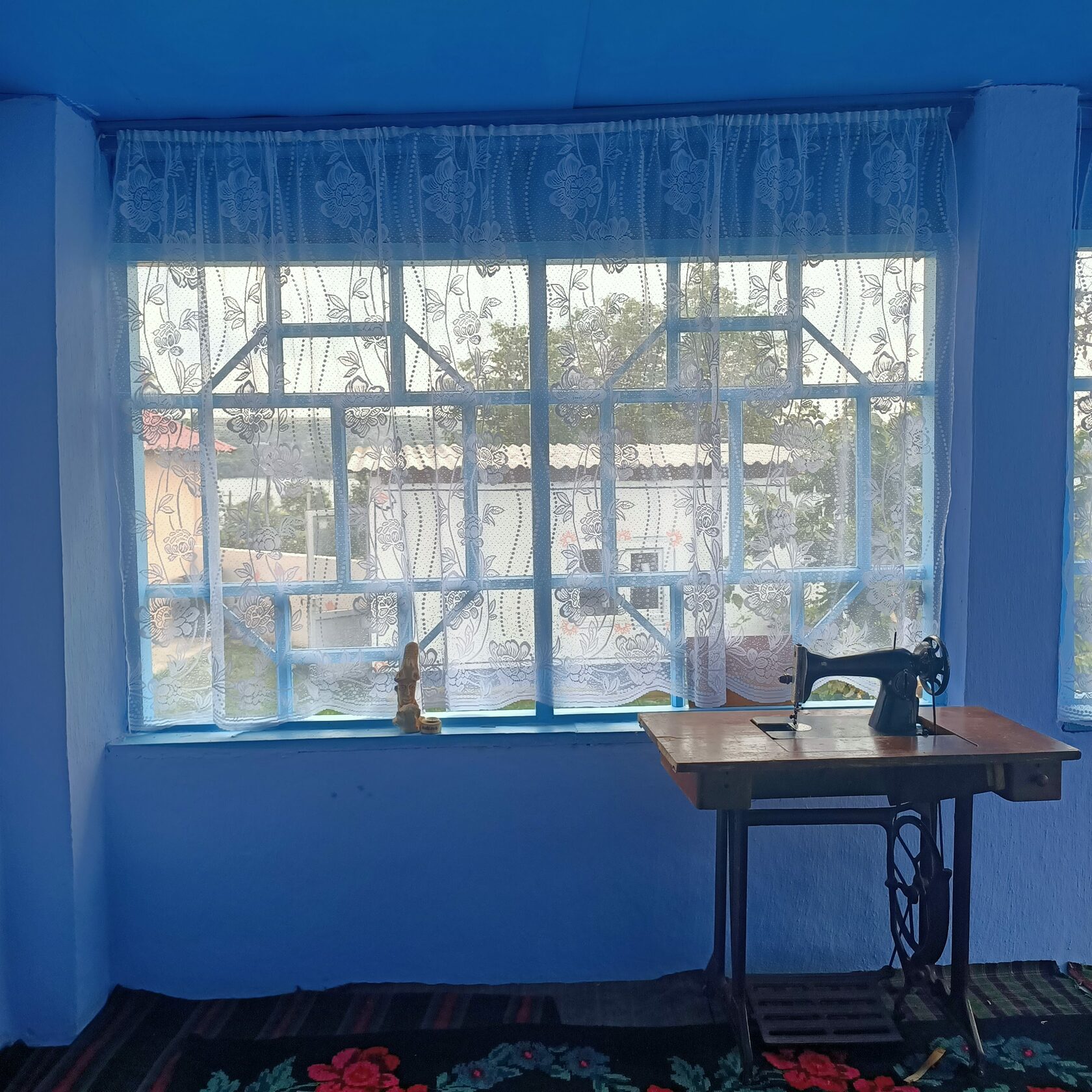
Lucia quickly sweeps in the yard and takes out the trash. She managed to tidy up in just about two hours. A group of tourists just left and another one is coming. Lucia Frunză took off her apron and is ready to welcome the guests. “They come from Chișinău, they come from everywhere,” she says in a hurry.
Lucia remembers when she received a group of 18 people. At their request, she cooked them plăcinte, pot roast and mămăligă. But she decided to make them a surprise and prepared some mulled wine. “As a bonus. I have a special recipe. I add black pepper, sugar, lemon, oranges and a little vanilla. These give the wine such an arooomaaa.”
She is a very good cook. And one of her secrets is a special knife, which she carries with her from home to the guest house and back. It’s a cleaver with a wavy pattern blade, so when she cuts produce, it has jagged edges. When she makes soup, she cuts the potatoes, the carrots, the meat and the onion – she slices everything with it. Once she brought a bowl of soup to uncle Colea. “Oh, this soup with farfalle is so good, it’s like at a restaurant!,” recalls Lucia amused about the impression she made on the neighbor.
The meadow and the cave
Gheorghe and Ludmila Frunză live down the road from the guest house. When Lucia has too much on her plate, the old couple helps her out with cooking or with laundry. He is 74 years old, and she is 70. In summertime, the couple spends their second youth in Vîșcăuți. In winter, when it’s cold, they go back to Chișinău.
Gheorghe was born here, and he knows all the surroundings like his five fingers. He knows how to reach the Boyar’s Cave two ways: one is more difficult and the other one easier.
If you are in good shape and have the courage, you can reach the Boyar’s Cave through the ravine. But Gheorghe’s legs can’t keep up with this trail as he used to. The pathway to the cave goes between two rocky hills. You will step on the slippery rocks, washed by the cold water of the springs. You will climb the trees so thick, you can’t embrace with both hands, knocked down by the summer rain.
You will slowly advance towards the cave located up the hill, where you’ll see the Cornelian cherry dogwood full of hard-to-reach red berries, which local people pick for making compote. If you try and yell between the two rocky hills, your voice will not travel far. You will have no use of modern technologies, and your phone will only be good for taking pictures. Here you can breathe fresh cold air, while embraced by the silence dictated only by the murmur of the water.
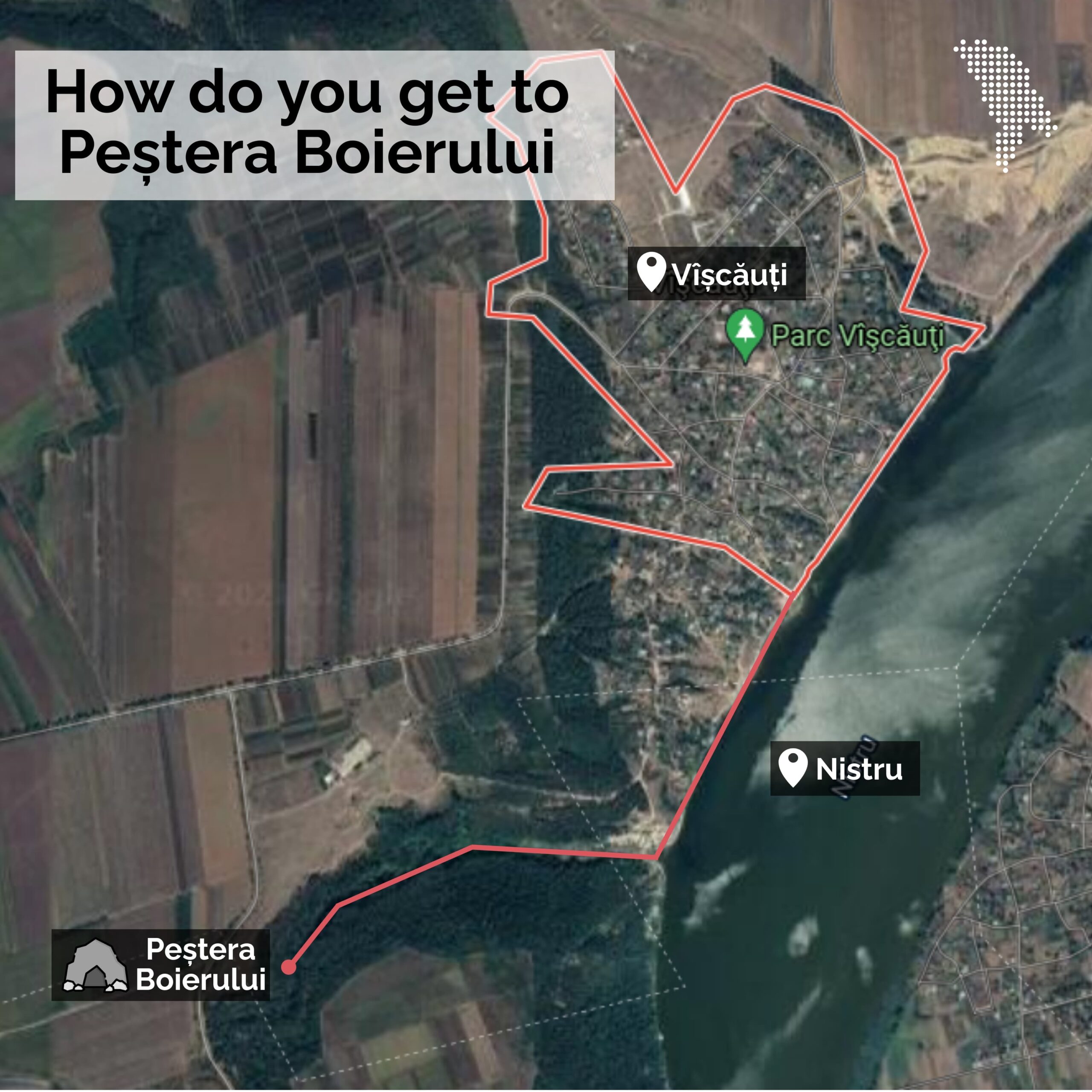
Once you reach the cave, you need a lantern. On the walls you can see “V+M=LOVE”, but also hanging bats – almost embraced one next to another. There are three entrances to the cave and many labyrinths. No one knows exactly what are its measurements. There are some assumptions that it’s one kilometer long. But you can’t really reach its depths, because it collapsed a long time ago.
There are many legends about the origin of the cave. Gheorghe tells us that it used to be a quarry, tons of rock being extracted for the construction of churches.
Actually, according to archives, the cave was dug by the Sandino boyar around 1900 for storing wine barrels.
Locals say that during the two world wars, the cave was used as shelter for their grandparents and great-grandparents, and that they were guarded by the soldiers stationed in Vîșcăuți.


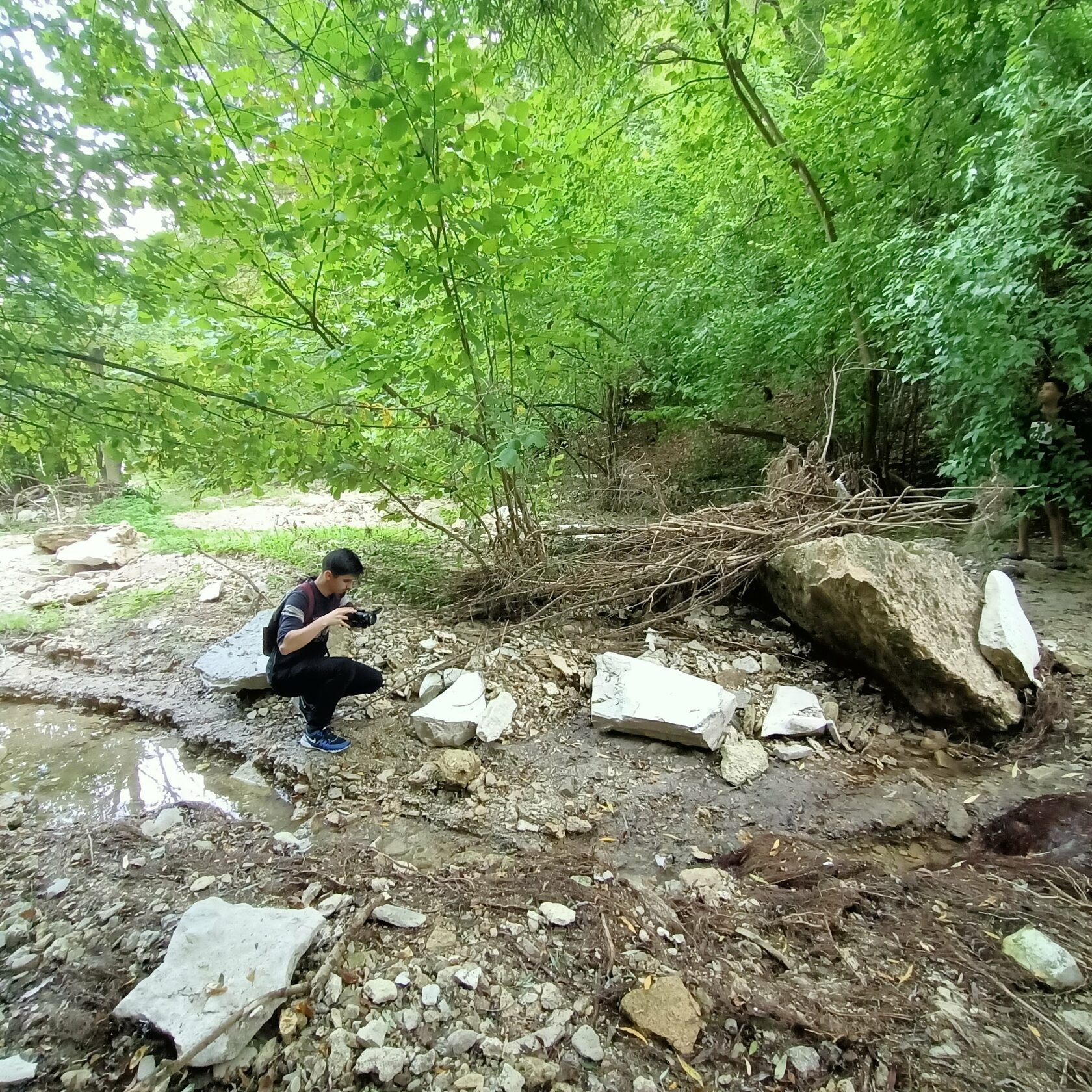
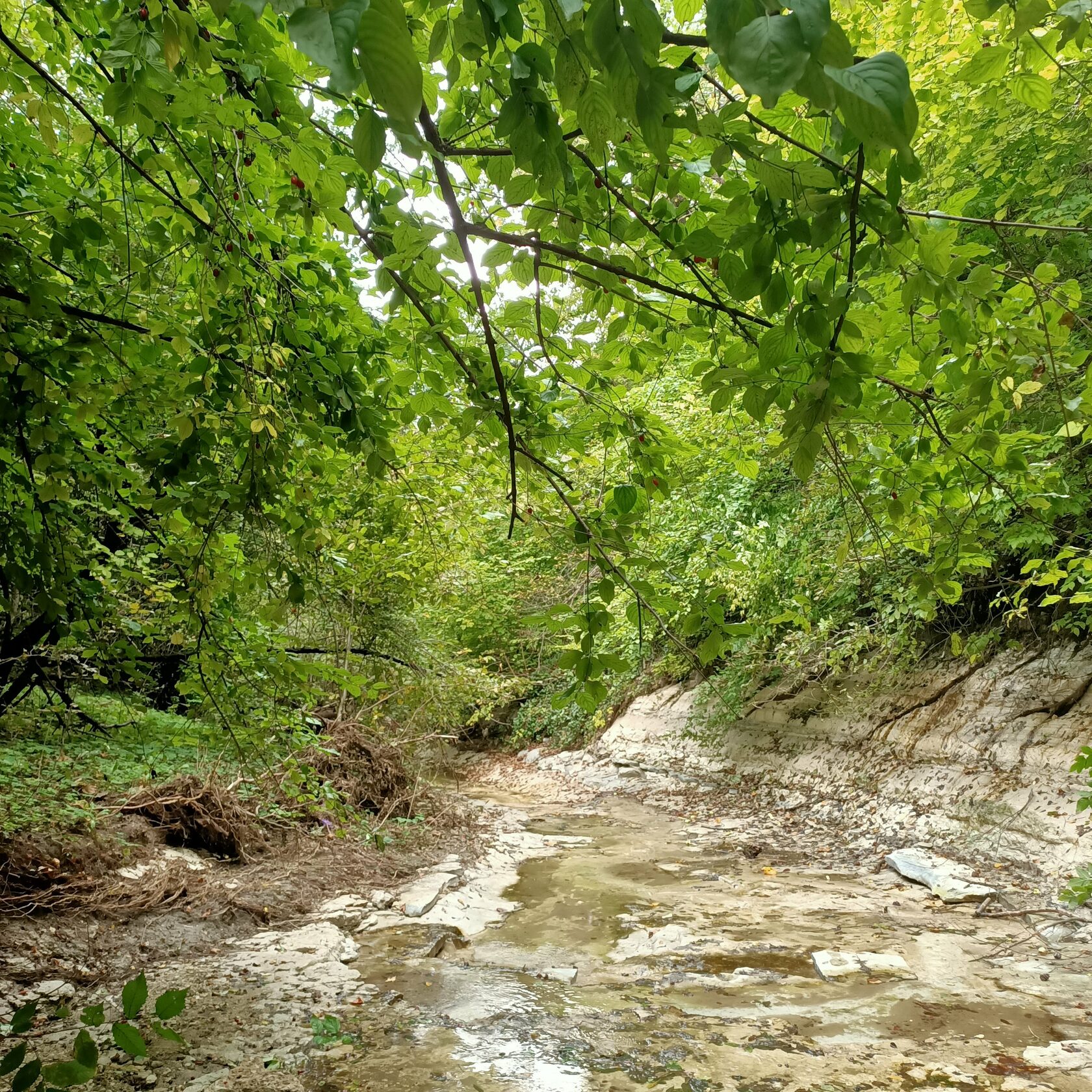
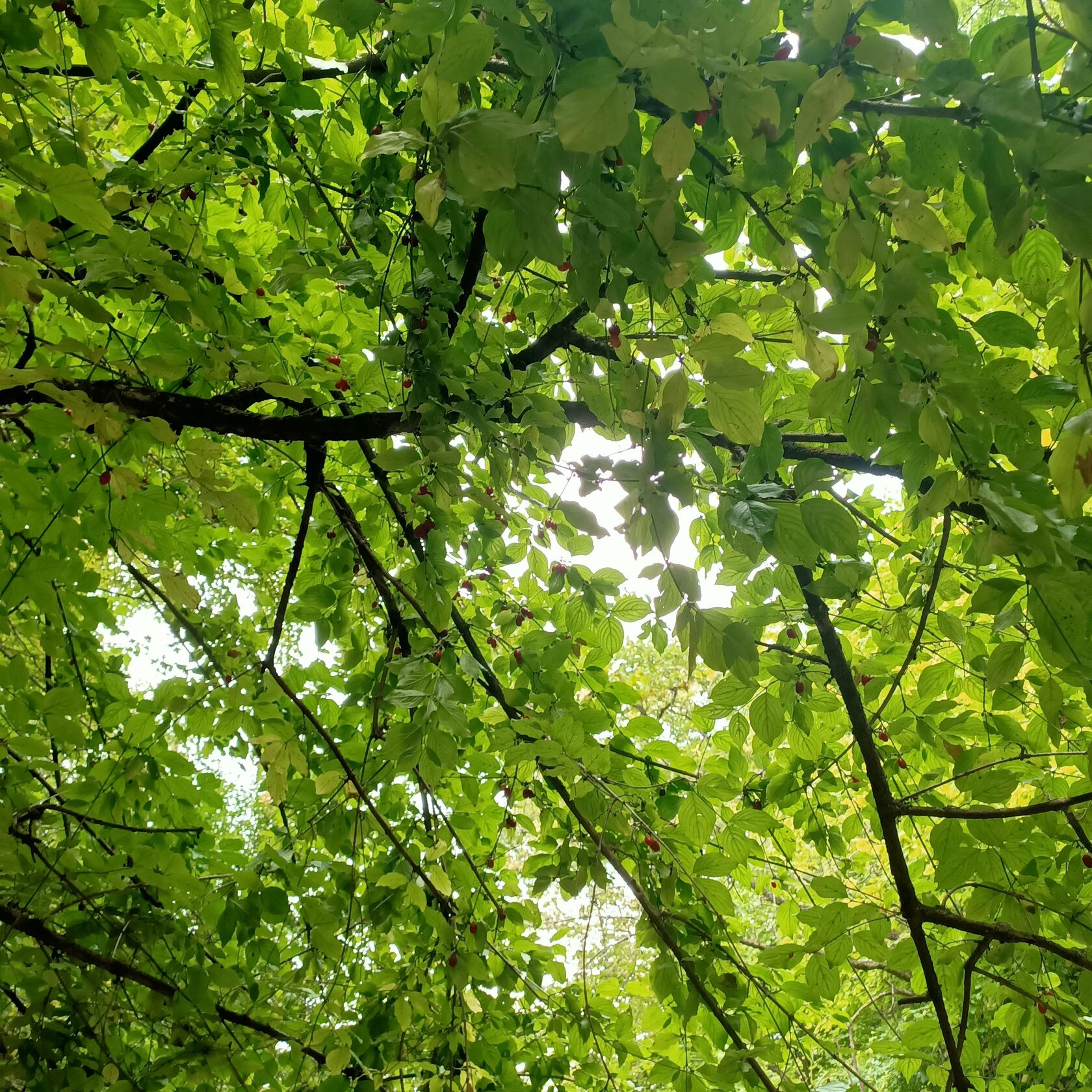
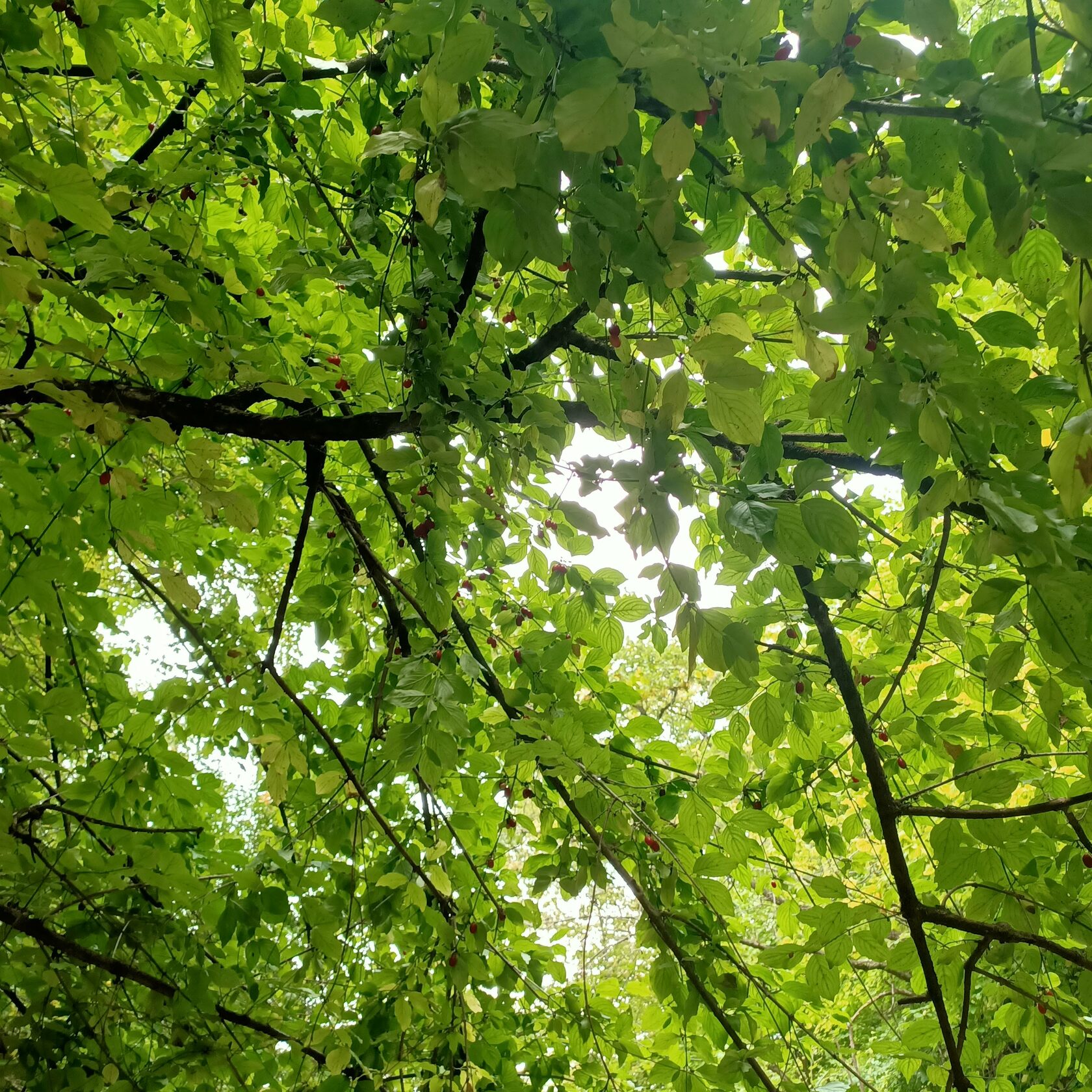
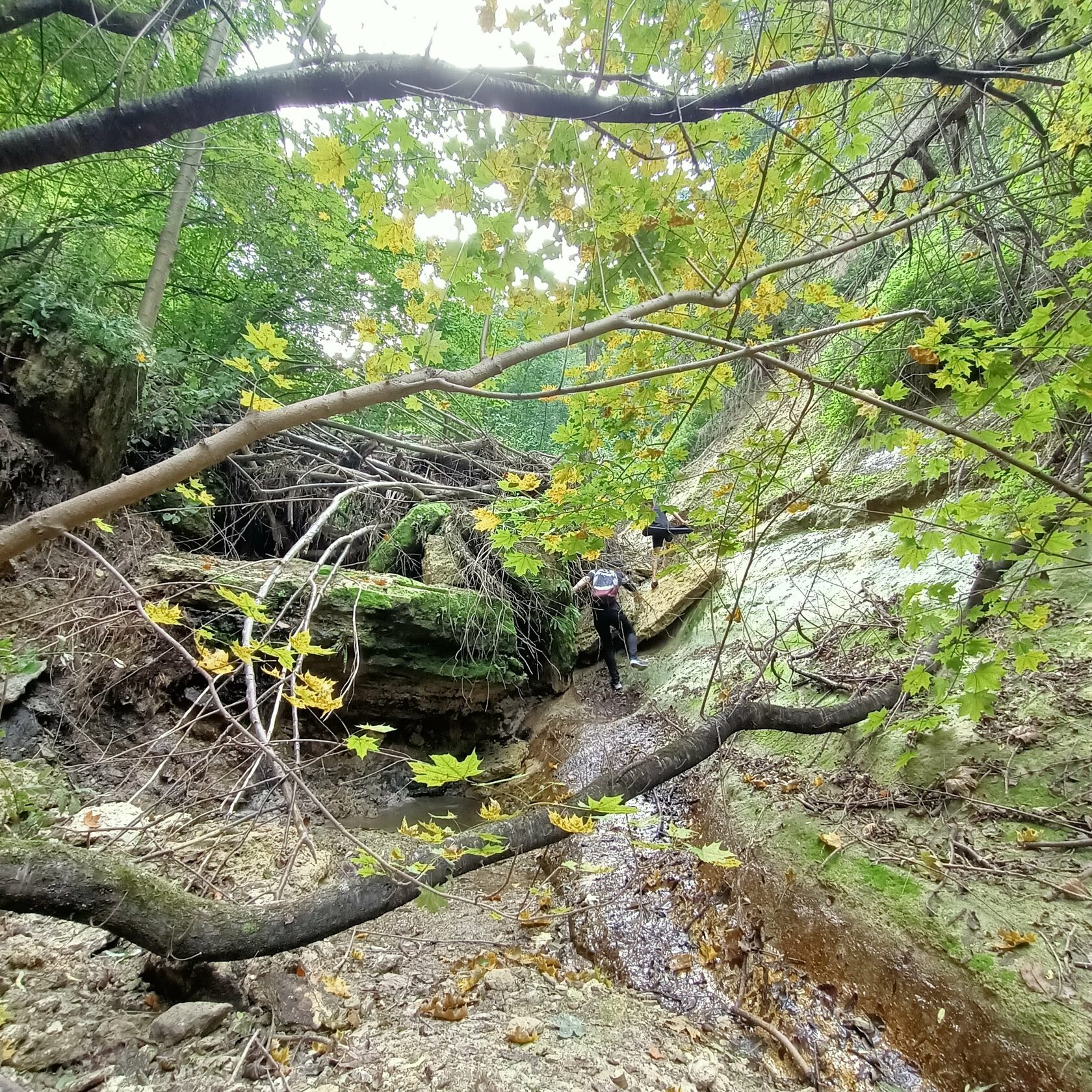
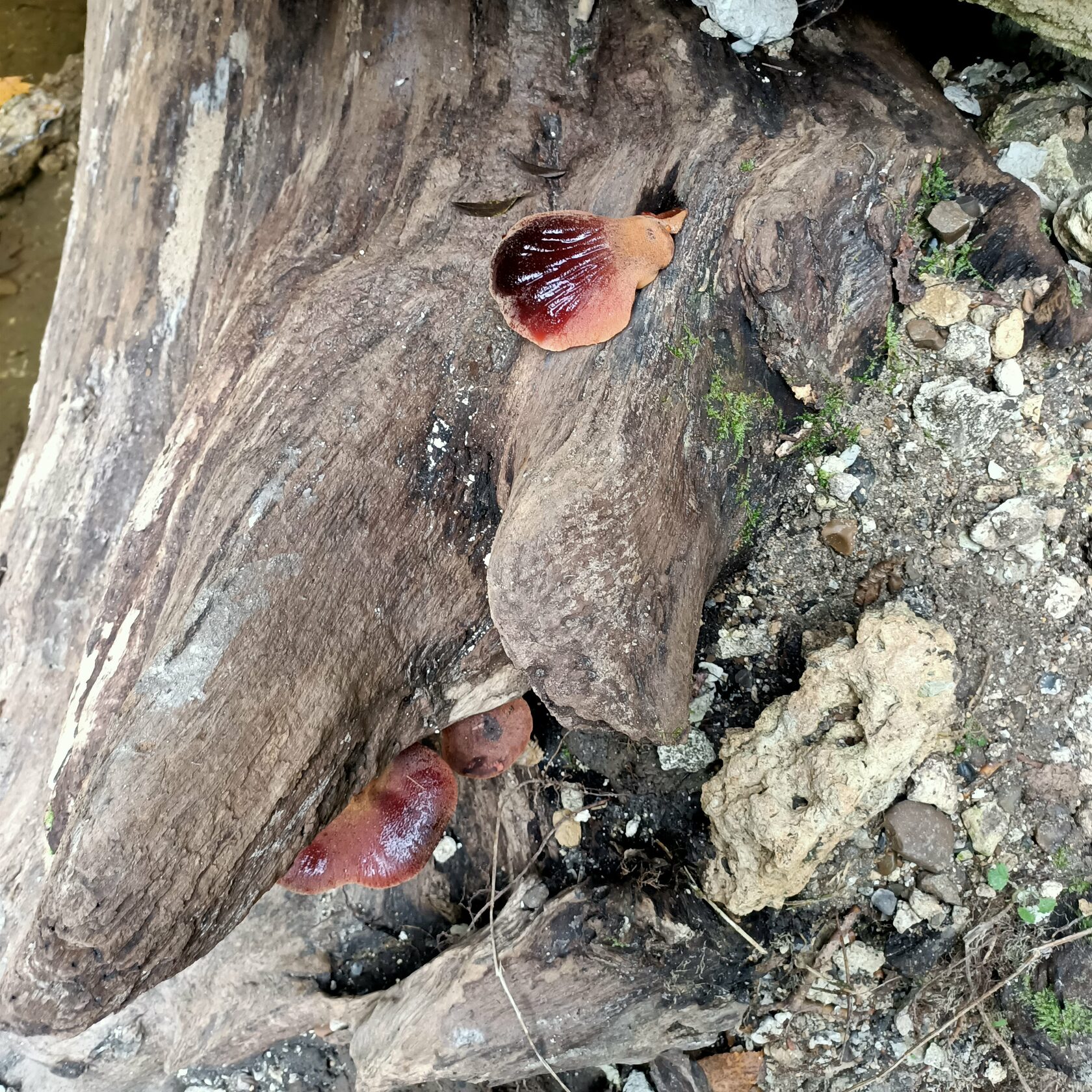
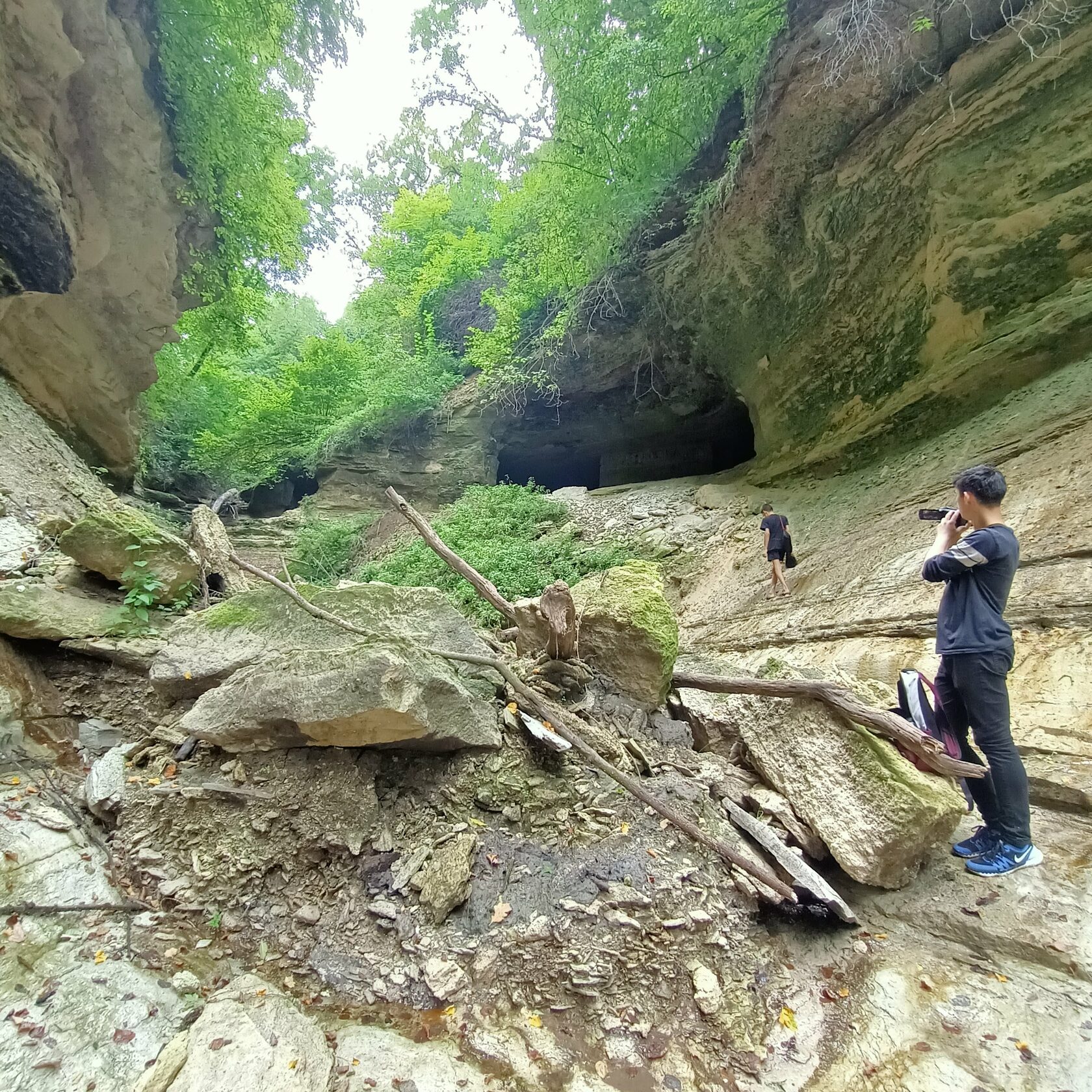
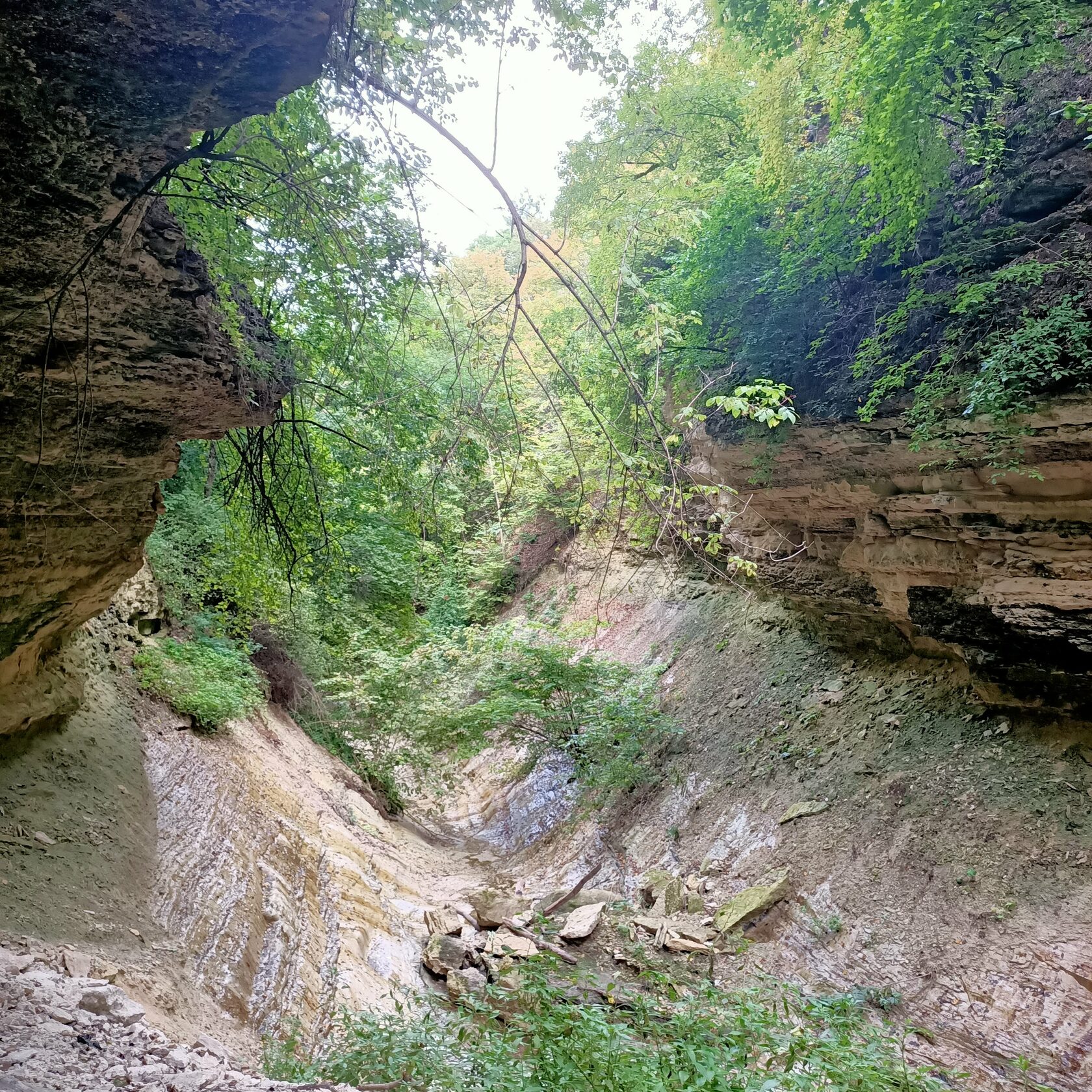

The old couple takes us on the river bank. “If you get on the boat and sail on the river, watching the forest… It’s such a beauty!,” Gheorghe tells us with excitement. He walks slowly and looks towards Nistru, watching the swans, the forest. “The air in Vîșcăuți almost makes you drunk,” he adds. He is followed by his wife Liuda and Daniel, a boy from the neighborhood.
They want to visit the three springs. It is said that the water of each of the springs has distinctive tastes. When they get to the place, they can see tourists’ traces: campfire ash, some pieces of paper. Tourists are not uncommon in these places. Gheorghe tells us that they come with their tents and spend a couple of days here fishing. He likes spending time with them. “All of them say that this is a nice quiet place”.
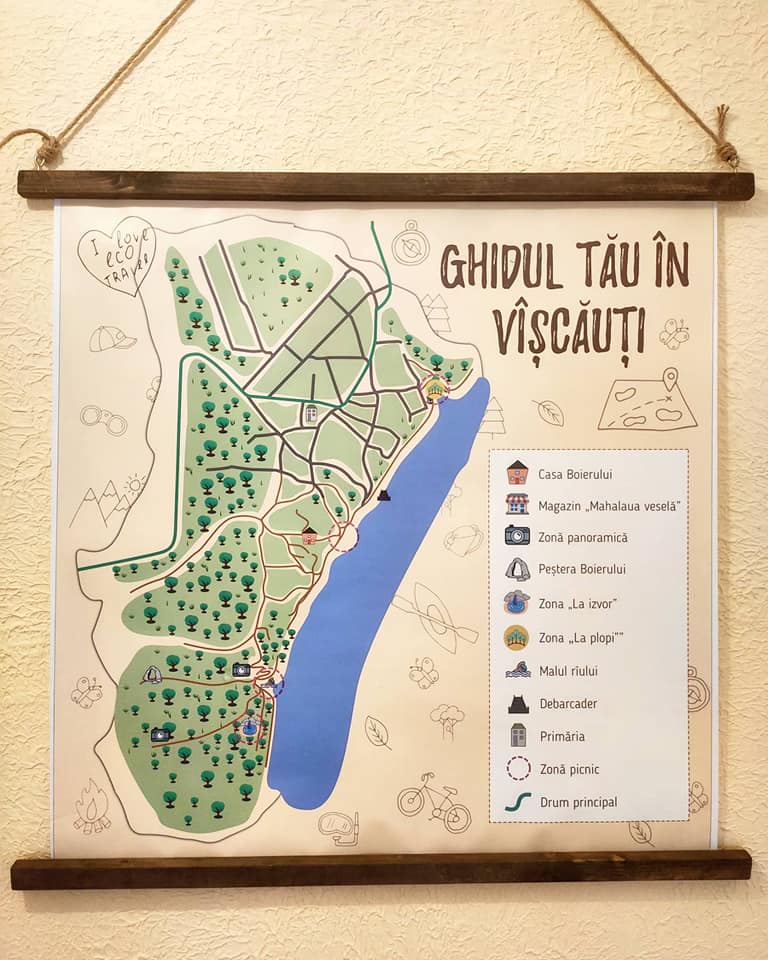
Map drawn for the tourists who visit the Boyar’s House
In Vîșcăuți you can rent a boat from the locals. You can also buy homemade bread, wine and free range chicken, fresh river fish, home grown vegetables. The village also has a beach, a picnic area, a wharf and a neighborhood called “The joyful neighborhood” due to the events organized here. From time to time, people gather here and cook fish soup or barbeque, they play some music, dance and party.
“The hill of Chirița” opens a view of Nistru river and the surrounding areas. “Now everything has dried-up… But when it’s green, the flowers there are wonderful!,” says Gheorghe.
“In Rață’s music video they showed the entire village. They filmed the forest and our meadow”, recalls Gheorghe. “There is also a song – My meadow. He sang it on TV many times,” adds Ludmila.
„Over the mountain, over the river – is my meadow,
Sometimes yearly, sometimes late – I take a walk there,
Over the mountain, over the river – flowers and roses,
Over the mountain, over the river – hidden memories.”
The lyrics to the song “My meadow”, sang by Moldovan singer Ion Rață, born in Vîșcăuți, where the music video was filmed.
Since the pandemic started, Ludmila and Gheorghe appreciate life in the village even more. “When the pandemic started, everyone was so agitated and scared. When we were in Chișinău, we would see all the ambulances and police cars throughout the entire city. But when we came here, it was like coming to heaven. When you get in the yard, you don’t need the mask any longer. We are peaceful here and we see to our chores. In Chișinău we didn’t have anything to do, except sitting on the benches outside. But here we exercise, we grow vegetables, fruits, we make canned food for winter,” Ludmila explains. She appreciates the tourists visiting the village, because the people have the opportunity to sell something to them. “They really don’t have a way to sell something in the village, no means to make a living.”
The luck and the happiness to be born at the river
Because the village is located on the banks of Nistru, the river is the one dictating the life in the region: it gives people water, it gives them food, but also leisure areas. Gheorghe remembers that especially during the soviet period he would visit his relatives on the other side of the river, in the village of Harmațca. They would barbeque under the willows near the river and then cross Nistru and continue their party under the willows of Vîșcăuți.
At the guest house, while stirring the pot roast, Lucia is humming a sad song. She is absorbed by the process and lets herself caught up in the moment:
Nistru, don’t drown me,
Nistru, don’t drown me,
Shai-rai-rai-ra, Shai-rai-rai-ra.
You don’t have the money to burry me,
You don’t have the money to burry me,
Shai-rai-rai-ra, Shai-rai-rai-ra.
“I woke up to this song. I woke up with my grandparents, with my parents, with the entire village singing it, and we learned it.” She grinds some cheese on a plate, and on another she puts some parmesan – so it’ll be tastier with the mămăliga. She puts some clay plates on the table and invites the guests.
“I am very proud to be born near the river,” says Lucia. She has happy memories of her childhood, when the winters were colder and the ice on the river could reach even 1 meter in depth. “Cars and tractors, even trucks with gas tanks would cross Nistru, driving towards the Transnistrian region,” she explains.
1 434 |
1 210 |
People live in VîșcăuțiSources: BNS, 2014 |
People live in HarmațcaSources: dubossary.ru, 2013 |
Even today, the bond between the two river banks is not lost. Lucia has relatives living in the village across the river, in Harmațca. “We have brothers and sisters, we have cousins, we are all related to each other. Because it’s a whole.”
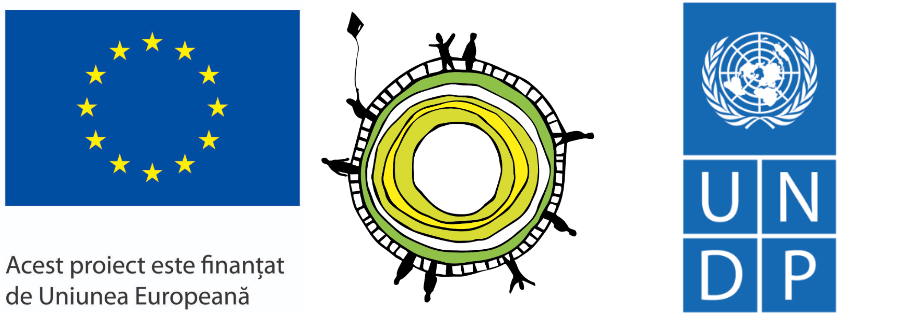
Produced with the financial support of the European Union within the “Support to Confidence Building Measures” project, implemented by UNDP. The opinions expressed in this material do not necessarily reflect the official position of the EU or UNDP.
Economy
Romania and Moldova signed a partnership memorandum pledging to cooperate in promoting their wines
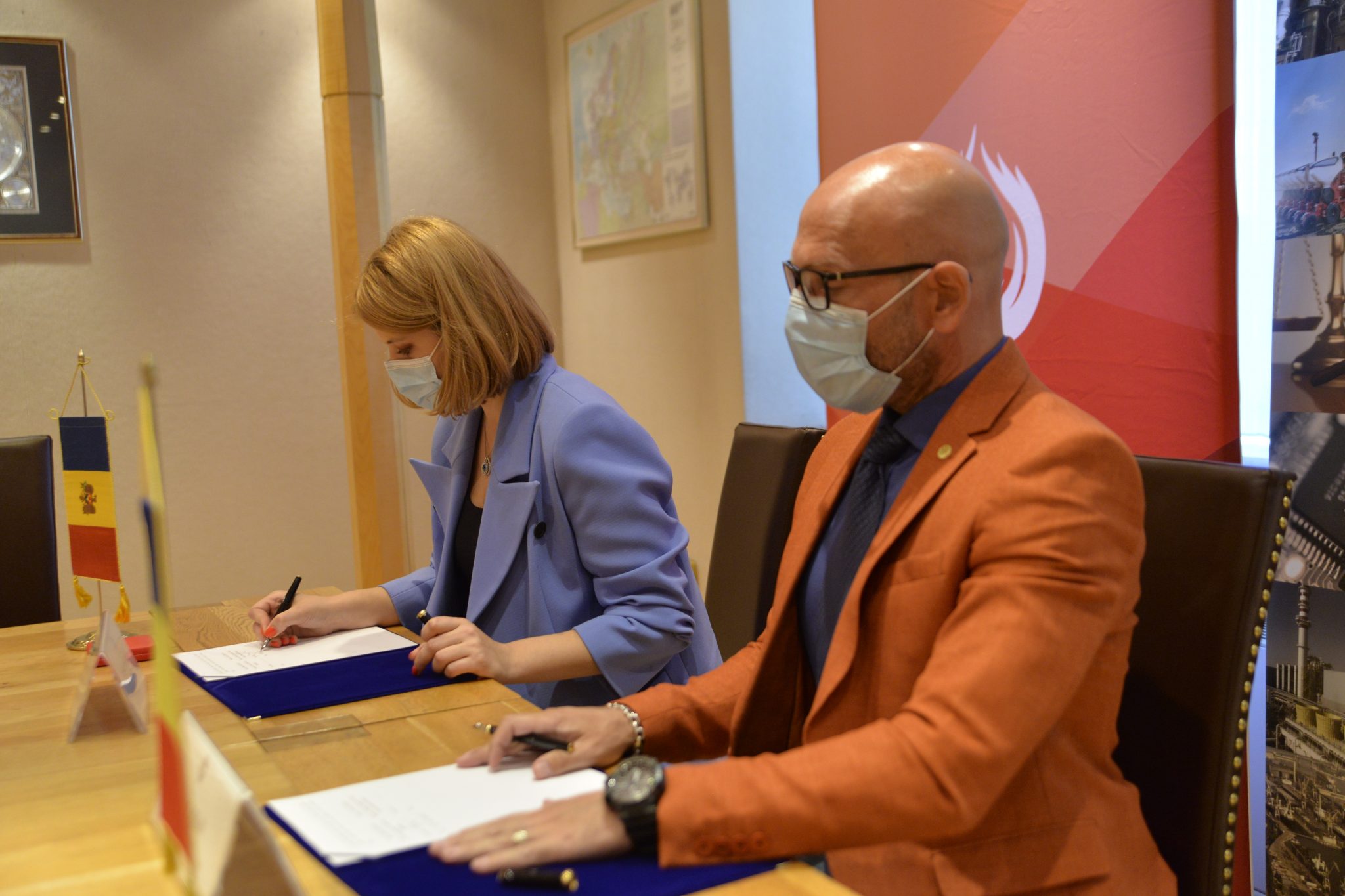
Reading Time: 2 minutesThe Chamber of Commerce and Industry of Romania (CCIR) and the National Office for Vine and Wine (NOVW) of the Republic of Moldova signed, last week, a memorandum of cooperation on organizing joint promotional activities in the markets of common interest, as the CCIR announced.
China, Japan or the USA are just some of the markets targeted by the Romanian and Moldovan institutions. The memorandum also involves advertising activities for wines from common indigenous varieties, promoting the oeno-tourist region, developing a tourist route in the two states, exchange of experience, study visits, and mutual support in identifying new export opportunities. “We are very confident that this collaboration between our organizations will lead to sustainable economic growth and a higher degree of well-being among Moldovans and Romanians,” claimed Deputy Secretary-General of CCIR, Bogdan Visan.
On the other hand, Director of the NOVW, Cristina Frolov, declared that no open competition with Romania is aimed at the governmental level of the Republic of Moldova. “This request for collaboration is a consequence of the partnership principle. Romania imports 10-12% of the wine it consumes, and we want to take more from this import quota. Every year, the Romanian market grows by approximately 2.8%, as it happened in 2020, and we are interested in taking a maximum share of this percentage of imported wines without entering into direct competition with the Romanian producer,” the Moldovan official said. She also mentioned that Moldova aims at increasing the market share of wine production by at least 50% compared to 2020, and the number of producers present on the Romanian market – by at least 40%.
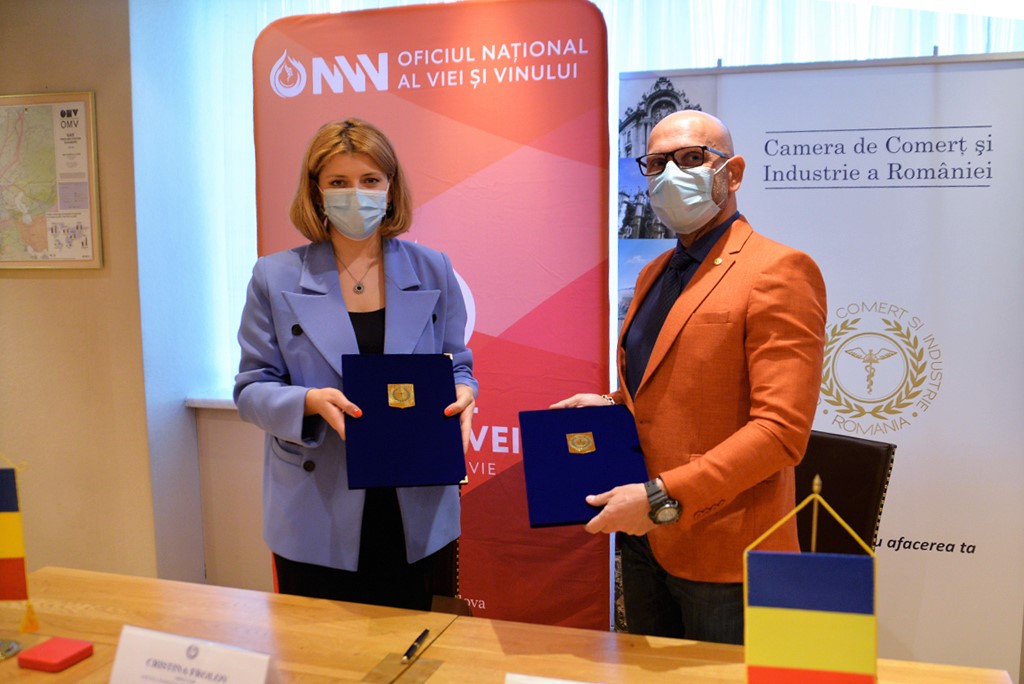
Source: ccir.ro
**
According to the data of the Romanian National Trade Register Office, the total value of Romania-Moldova trade was 1.7 billion euros at the end of last year and over 805 million euros at the end of May 2021. In July 2021, there were 6 522 companies from the Republic of Moldova in Romania, with a total capital value of 45.9 million euros.
The data of Moldova’s National Office of Vine and Wine showed that, in the first 7 months of 2021, the total quantity of bottled wine was about 27 million litres (registering an increase of 10% as compared to the same period last year), with a value of more than one billion lei, which is 32% more than the same period last year. Moldovan wines were awarded 956 medals at 32 international competitions in 2020.
Photo: ccir.ro



